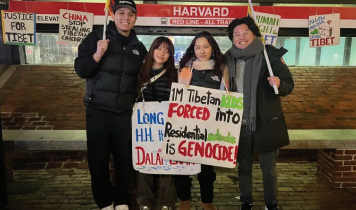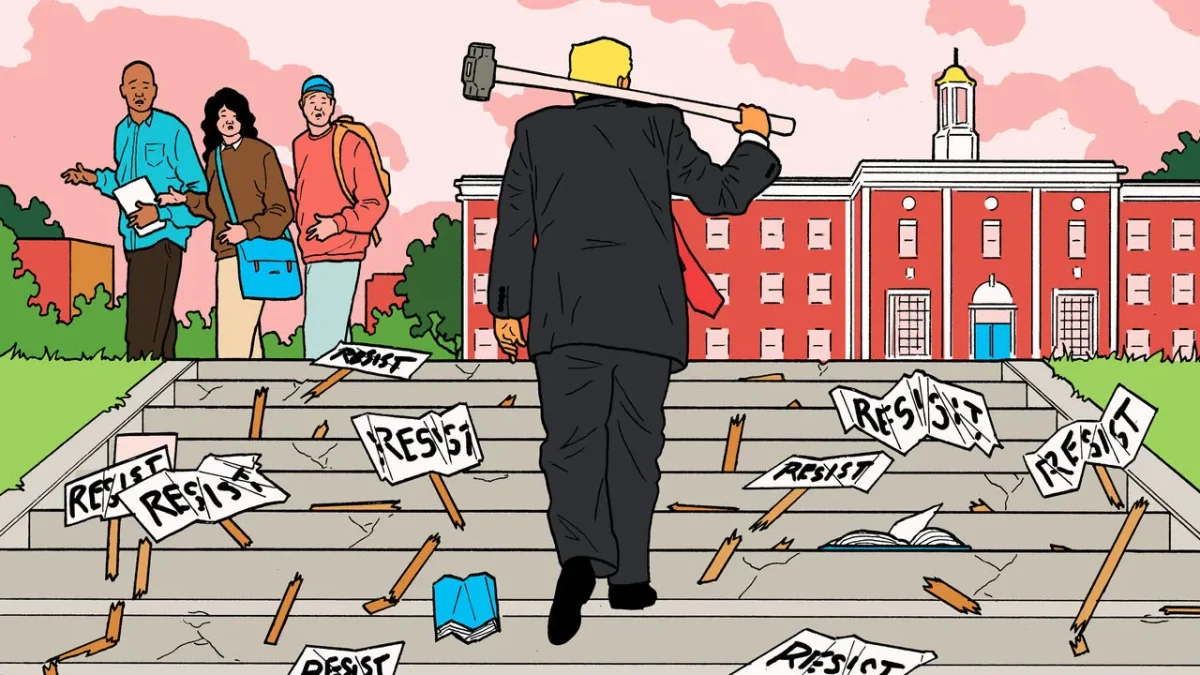
On Wednesday, January 15th, huddled in small groups in front of the Harvard Square metro station, members of the Boston-area Tibetan community held signs and flags to protest China’s human rights violations of the Tibetan population.
Since the Chinese Communist Party’s invasion of Tibet in 1950, China has claimed sovereignty over Tibet. Though the Tibetan people consider themselves a distinct nation, culturally and religiously separate from China, they have little political autonomy and have undergone massive cultural suppression by the CCP. The latest development—the implementation of residential boarding schools to indoctrinate and assimilate Tibetan children—has sparked renewed outrage among a local activist group.
Chief among the protesters were members of the chapter-based activist group Students for a Free Tibet (SFFT). For two hours, they shifted from foot to foot in fifteen degree weather, handing out Tibetan flags and protest signs to eager participants.
Since 2008, the SFFT Boston chapter has been conducting protests every Wednesday in front of the train station. This long-standing tradition of activism has taught Gregory Zeldovich, a Belmont High School sophomore and SFFT Boston chapter activist, more about himself. “You can’t really get a protest to be perfect; there’s always going to be something you overlook,” Zeldovich admits to the Register Forum. “That’s taught me, in my personal and academic life, that I should probably step a little off the perfectionism… It’s also taught me the importance of consistency. If the protests only happened once or twice a month, people wouldn’t take it so seriously. But when they hear, ‘Oh, we’ve been doing this pretty much every single Wednesday–in the cold–since all the way back in 2008,’ that’s where it really lend you credibility.”
In a time when student activism has been increasingly subject to cultural belittlement, Zeldovich sees his age affecting how his activism is perceived. “People are a little skeptical of me because I am younger, and generally people have an internalized appeal towards those who appear to have more experience. But in reality, I know a lot about this. I’ve been doing this for the better part of a year now… It’s definitely a little more difficult being a student, but that’s what makes it all the more rewarding to educate people.”
The lack of western media coverage on the Tibetan crisis adds a sense of urgency to Zeldovich’s activism. He believes education is the cornerstone of the movement. “Tibet is the cradle of my religion. From a moral, social, and environmental perspective, it should be protected.”
For students looking to get involved in activism, Zeldovich suggests, “Social media is always a great place to start… but really, it’s all about teaching people, and word of mouth is ultimately going to be the best way. Online can only get so far, and at some point, your in-person efforts will need to increase… Educate yourself, then educate others, and then build up an in person presence.”
SFFT’s weekly protests in Harvard Square emphasize student activism as an invaluable tool in raising awareness. Through organization and meaningful discussion, Boston-based high school and college students are able to bring visibility to the issues they find important.
This article also appears in our February 2025 print edition.













